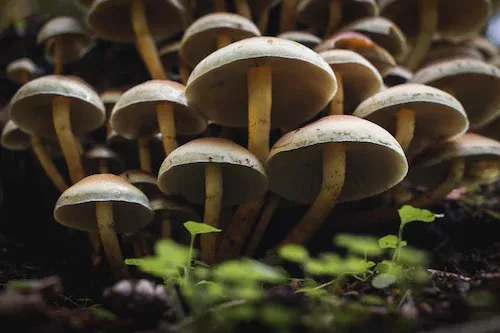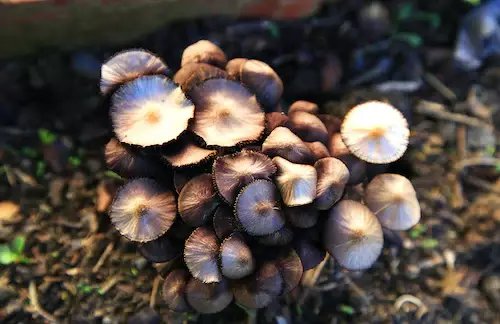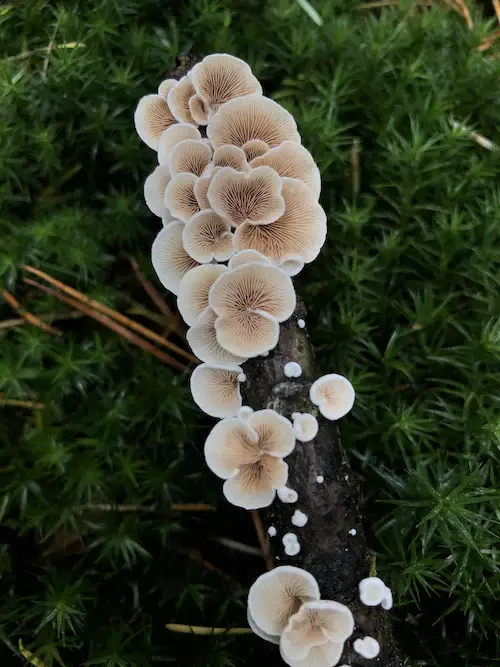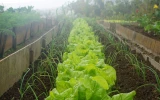Increase Mushroom Yield with 7 Surprising Hacks
Mushrooms are a tasty and versatile addition to many dishes, but they can be a pain to grow. Increasing mushroom yield can be a tricky task, but with the right strategies, it can be accomplished. There are a few simple and surprising hacks you can use to boost your mushroom production.
To increase mushroom yield, you can provide the right environment for them, maintain the right humidity levels, avoid overcrowding, and use organic fertilizers. Monitoring the soil temperature, using organic fungicides, and regularly pruning your crop can also help in boosting the harvest of your mushroom.
From using a simple potting mix to adjusting the temperature and humidity of your growing area, these seven hacks will help you get the most out of your mushroom crop. With a little bit of effort and the right tips, you'll be able to increase your mushroom yield in no time.
Summary
- Some surprising hacks to increase mushroom yields include using higher concentrations of carbon dioxide, utilizing automated irrigation systems, and using a separate nutrient supply for mushrooms.
- Using natural sources of carbon dioxide, keeping the humidity levels ideal, and using the right composting techniques can also increase your mushroom yield.
- By implementing these methods, mushroom farmers can enjoy bigger yields and a more successful harvest.

On this page:
7 Surprising Ways to Boost Mushroom Yield
Are you looking for ways to increase your mushroom yield? Growing mushrooms can be a rewarding yet challenging experience. Check out these seven surprising hacks that can help you increase your yield and get more out of your mushroom-growing endeavor.
1. Provide the right environment to achieve optimum mushroom yields
The key to providing the right environment is to understand the needs of the mushroom species you are growing and then create a suitable environment to meet those needs.
One of the most important factors for increasing mushroom yield is temperature.
Most mushroom species prefer temperatures between 65 and 75 degrees Fahrenheit, although some species may require slightly higher or lower temperatures.
Additionally, air circulation is important to prevent mold and fungus from growing, so it is important to ensure there is adequate airflow in the area where mushrooms are grown.
Light is also important for mushroom cultivation. Most mushroom species require indirect light, such as natural sunlight or fluorescent lights. However, some species may require more direct light, such as LED lights.
Finally, moisture is also a key factor in growing mushrooms. It is important to provide adequate moisture to the environment without creating a wet, soggy environment. The ideal moisture level for mushrooms is between 60-70%.
By providing the right environment, mushroom growers can increase their yield significantly. This can be done by creating the right temperature, air circulation, light, and moisture levels.
2. Ensure a successful mushroom crop is maintaining the right humidity levels
High humidity is essential for mushrooms to thrive and produce a large yield. Too much or too little humidity can lead to poor mushroom growth and low yields. Fortunately, there are several ways to hack the right humidity levels to increase your mushroom yield.
- Use a humidifier to maintain the right humidity levels in your growing environment. This is especially important in dryer climates, as the humidity levels can easily drop too low.
- You can also use fans to circulate the air and prevent humidity levels from becoming too high.
- Mist your mushrooms regularly. This will help to ensure that your mushrooms are getting the moisture they need to thrive.
- Use a tray of water to create humidity in the growing environment.
- You can also use a humidity gauge to monitor the humidity levels and make sure they remain at optimal levels for mushroom growth.
3. Avoid overcrowding to increase mushroom yield
The idea behind this hack is simple: by spacing out the mushrooms, the plants are more able to access the nutrients and air they need to thrive. This helps promote healthy growth and increases mushroom yields. Additionally, it reduces the risk of disease spread, as overcrowding can lead to increased contamination and disease.
To implement this hack, growers should first assess their current planting practices and determine the ideal spacing for their mushrooms. Once the ideal spacing is determined, growers should plan their beds accordingly and ensure that all plants have enough space and air to thrive.
Finally, growers should also consider using companion planting to maximize the efficiency of their bed space. For example, some plants attract beneficial insects, which can help control pests and diseases, while others can provide shade and shelter for growing mushrooms. By combining the strategy of avoiding overcrowding with companion planting, mushroom growers can get the most out of their beds and maximize their yield.

4. Use organic fertilizers to increase the yield of mushrooms
Organic fertilizers are fertilizers that are made from natural sources such as manure, compost, and other plant matter. These fertilizers are rich in essential nutrients that mushrooms need to grow and thrive.
Organic fertilizers are not only beneficial for mushrooms, but they are also beneficial for the environment. Organic fertilizers are much more sustainable than chemical fertilizers, as they are made from natural sources and do not contain any harmful chemicals. Additionally, organic fertilizers are often less expensive than chemical fertilizers, making them a cost-effective way to increase mushroom yield.
When using organic fertilizers to increase mushroom yield, it is important to use the right type of fertilizer for the type of mushroom being grown. Different types of mushrooms have different nutrient requirements, so it is important to ensure that the correct fertilizer is being used. Additionally, organic fertilizers should be applied at the correct rate, as too much fertilizer can lead to nutrient burn and stunt the growth of the mushrooms.
5. Monitor the soil temperature is an important step in increasing mushroom yield
Proper temperature control is critical for successful mushroom cultivation, as the temperature of the soil directly affects the growth rate of the mushrooms. Too high a temperature can lead to poor growth, while too low a temperature can cause the mycelium to go dormant.
Using a soil temperature monitoring system, mushroom growers can closely monitor the temperature of their soil to ensure optimal conditions for their mushroom crop. This system works by using a thermometer or thermistor to measure the temperature of the soil. The data is then sent to a computer, where it can be analyzed and monitored.
By closely monitoring the soil temperature, mushroom growers can adjust their cultivation practices accordingly to maximize their yield. For example, if the soil temperature is too high, the growers can add more water to cool it down. If the soil temperature is too low, the growers can add more organic material to warm it up.
By monitoring the soil temperature, mushroom growers can also get an accurate picture of the temperature fluctuations in their environment, which can be very helpful for predicting mushroom fruiting times. This data can be used to plan for harvesting and can help growers optimize their production.
6. Use organic fungicides to increase mushroom yield
By using organic fungicides, you can prevent the spread of diseases that can reduce the yield of your mushrooms. Fungicides are a type of pesticide that is used to protect plants from diseases caused by fungi, such as mildew and blight. Organic fungicides are made from natural materials and are less toxic than synthetic fungicides.
- Organic fungicides are most effective when applied at the first sign of disease.
- They can be applied as a spray, dust, drench, or soil drench. A soil drench is the most effective as it reaches the roots of the mushrooms, where the fungi are most likely to cause problems.
- The fungicide should be applied every 7–14 days, depending on the severity of the disease.
- Organic fungicides can also be used to treat the soil before planting mushrooms.
- This helps to prevent the spread of fungi and other diseases in the soil.
- The fungicide should be applied at least two weeks before planting and should be reapplied every 7–14 days.

7. Regularly prune your crop to maximize your mushroom yield
Pruning is the process of removing the parts of a mushroom that are not contributing to production, such as old, damaged, or diseased mushrooms.
- It can help improve the overall health of the mushroom crop.
- It helps reduce the spread of disease and pests.
- It reduces competition for resources among mushrooms.
When pruning your crop, it is important to be careful not to damage the mushrooms. You should remove only the parts that are not contributing to the overall health and yield of the crop. It is also important to be aware of the growth stages of the mushrooms, as pruning too early can hinder their growth.



